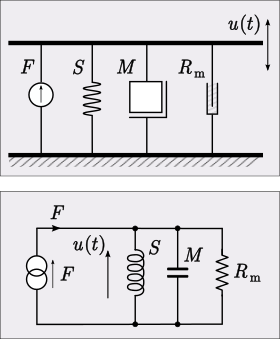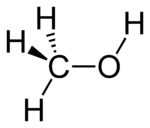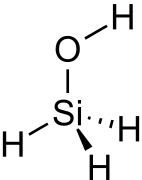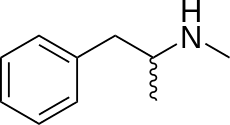Structural analog
Structural analogs (structural analogue or simply analog) are models or representations that keep each other certain "structural similarity". It is used in engineering, chemistry, mathematics and other fields.
Despite the field diversity, all structural analog analysis use some level of abstraction to transform models in mathematical graphs, and detected structural analogies by algorithms. Example: for molecular structure comparison and classification operations, the compared compounds are modeled as a mathematical graph.[1] Formally, when structures are represented by graphs, the concept of analog is related to a graph isomorphism.
Systems engineering

Analogical models are used in a method of representing a ‘target system’ by another, more understandable or analysable system.
Two systems have analog structures (see illustration) if they are isomorphic graphs and have equivalent (mapped) lumped elements. In Electronics, methods based on fault models of structural analogs gain some acceptance in industry.[2]
Chemistry
In chemistry, a structural analog, (structural analogue), also known as chemical analog or simply analog, is a compound having a structure similar to that of another one, but differing from it in respect of a certain component.[3][4][5]
It can differ in one or more atoms, functional groups, or substructures, which are replaced with other atoms, groups, or substructures. A structural analog can be imagined to be formed, at least theoretically, from the other compound.
Despite a high chemical similarity, structural analogs are not necessarily functional analogs and can have very different physical, chemical, biochemical, or pharmacological properties.[6]
In drug discovery either a large series of structural analogs of an initial lead compound are created and tested as part of a structure-activity relationship study[7] or a database is screened for structural analogs of a lead compound.[8]
Chemical analogues of illegal drugs are developed and sold in order to circumvent laws. Such substances are often called designer drugs. Because of this, the United States passed the Federal Analog Act in 1986. This bill banned the production of any chemical analogue of a Schedule I or Schedule II substance that has substantially similar pharmacological effects, with the intent of human consumption.
| Examples | ||||||||||
|---|---|---|---|---|---|---|---|---|---|---|
|
See also
- Derivative (chemistry)
- Homolog, a compound of a series differing only by repeated units
- Functional analog, compounds with similar physical, chemical, biochemical, or pharmacological properties
- Transition state analog
- Federal Analogue Act, a United States bill banning chemical analogues of illegal drugs
References
- ↑ C Ashby et all (2013), "New enumeration algorithm for protein structure comparison and classification", BMC Genomics DOI:10.1186/1471-2164-14-S2-S1
- ↑ "Analog Automatic Test-Pattern Generation", M. L. Bushnell, V. D. Agraval
- ↑ Willett, Peter, Barnard, John M. and Downs, Geoffry M. (1998). "Chemical Similarity Searching" (PDF). Journal of Chemical Information and Computer Science 38: 983–996. doi:10.1021/ci9800211.
- ↑ A. M. Johnson, G. M. Maggiora (1990). Concepts and Applications of Molecular Similarity. New York: John Willey & Sons. ISBN 0-471-62175-7.
- ↑ N. Nikolova, J. Jaworska (2003). "Approaches to Measure Chemical Similarity - a Review". QSAR & Combinatorial Science 22 (9-10): 1006–1026. doi:10.1002/qsar.200330831.
- ↑ Martin, Yvonne C., Kofron, James L. and Traphagen, Linda M. (2002). "Do Structurally Similar Molecules Have Similar Biological Activity?". Journal of Medicinal Chemistry 45 (19): 4350–4358. doi:10.1021/jm020155c. PMID 12213076.
- ↑ Schnecke, Volker and Boström, Jonas (2006). "Computational chemistry-driven decision making in lead generation". Drug Discovery Today 11 (1-2): 43–50. doi:10.1016/S1359-6446(05)03703-7.
- ↑ Rester, Ulrich (2008). "From virtuality to reality - Virtual screening in lead discovery and lead optimization: A medicinal chemistry perspective". Current Opinion in Drug Discovery & Development 11 (4): 559–68. PMID 18600572.
External links
- Analoging in ChEMBL, DrugBank and the Connectivity Map — a free web-service for finding structural analogs in ChEMBL, DrugBank and the Connectivity Map.




